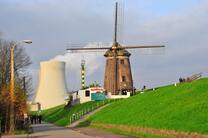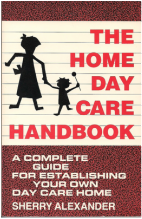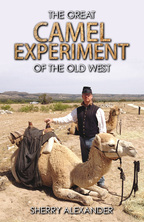 Photo by Boudewijn Huysmans
Photo by Boudewijn Huysmans In the world of energy production, there are many problems that need to be solved, and there is an energy source that can solve many of these issues. The energy source is called nuclear power, and it can address the many problems with energy production today such as reliability, cleanliness, and climate change. Current nuclear energy technology utilizes nuclear fission, the splitting of atoms, to produce energy. Many people have been led to believe that nuclear energy is highly dangerous because of accidents, waste, and weapons, but is it possible that the dangers of these problems have been significantly overblown, and even more common, familiar forms of energy are actually more dangerous? American voters should push for greater reliance on nuclear energy since it is reliable, clean, and safe, and it can help fight climate change, supplement renewables, and it is an energy source that is continuing to improve.
To start off, people should push for nuclear energy since it is highly reliable. Nuclear energy is the most reliable form of energy production. No other form of energy production comes close to the reliability of nuclear energy. A good way to measure the reliability of a power plant is by looking at its capacity factor. This is the measure of how often a power plant runs during a period of time. It is given as a percentage and is calculated by dividing the power output over a period of time by the maximum possible output during that period of time. For example, if a power plant produced 500 megawatts of electricity in a year, but could have produced 1000 megawatts if it ran at maximum output that whole year, the capacity factor of the power plant for that year would be 50%. According to a graph made by the Department of Energy, nuclear power plants had a capacity factor of “93.5%” in 2019. For comparison, natural gas plants in 2019, which were the second highest to nuclear, had a capacity factor of “56.8%”. Coal plants had a capacity factor of “47.5%”, and solar plants had a capacity factor of “24.5%” (“Nuclear Power Is the Most Reliable Energy Source and It's Not Even Close.”). As you can see, nuclear power plants were far more reliable than other types of power plants. This is due to the fact that nuclear power plants require less maintenance and can go longer periods of time without needing to be refueled. The reliability of nuclear power plants cannot be beat, so people should push for nuclear energy since it will guarantee a stable supply of electricity.
People should also push for nuclear energy since it is a clean source of energy. Nuclear power plants do not emit any type of pollutants into the atmosphere. For comparison, fossil fuels release pollutants into the atmosphere, such as nitrogen oxide (NOx) and sulfur dioxide (SO2), which are responsible for many diseases. Per the Nuclear Energy Institute: “These pollutants contribute to stroke, heart disease, neurological disease, lung cancer and respiratory diseases, including asthma. Without nuclear power, NOx and SO2 levels in the U.S. would increase by more than 26 percent” (Air Quality). Nuclear energy helps to reduce the amount of harmful pollutants being released into the atmosphere. Without them, the amount of pollutants in the atmosphere would be much higher, and overall public health would be worse. Many people will ask the question of nuclear waste. Nuclear power plants produce radioactive waste which can be radioactive for tens of thousands of years. The nuclear sector is the only energy producing sector that takes full responsibility for all of the waste that it produces. According to the Department of Energy, “...the U.S. has produced roughly 83,000 metrics tons of used fuel since the 1950s…” (“5 Fast Facts about Spent Nuclear Fuel”). This is actually a relatively small amount of waste.
For comparison, coal plants produce significantly more waste. According to the Environmental Protection Agency, “...nearly 130 million tons of coal ash was generated in 2014” (“Coal Ash Basics”). This waste is harmful to both the environment and human health and it is poorly contained. Nuclear waste, on the other hand, is safely stored in its entirety to prevent environmental contamination. This waste also isn’t useless. According to the Department of Energy, “Used nuclear fuel can be recycled to make new fuel and byproducts” (“5 Fast Facts about Spent Nuclear Fuel”). Not only is this waste safely contained, it can also be recycled to be put back into a nuclear reactor. Nuclear energy is very clean, so people should support it since it will help ensure good physical health.
Another reason voters should consider nuclear energy is that it is very safe. This may seem backwards to many people. They will immediately think of nuclear accidents such as the ones at Chernobyl and Fukushima and say, because of those, nuclear energy is dangerous. Although these events were significant, nuclear energy overall has killed far fewer than other sources of energy production. According to the World Health Organization, “Ambient air pollution accounts for an estimated 4.2 million deaths per year…” (“Air Pollution”). Air pollution kills a significant number of people each year, and a large portion of this air pollution comes from power plants that utilize fossil fuels. Because of this, fossil fuels have killed a significantly larger number of people than nuclear energy over the course of history. According to a graph made by Hannah Ritchie from Our World in Data, nuclear energy has killed “0.07” people per terawatt-hour of energy produced. For comparison, coal has killed “24.62” and oil has killed “18.43” people per terawatt-hour of energy produced (Ritchie). She also states “Nuclear energy, for example, results in 99.8% fewer deaths than brown coal; 99.7% fewer than coal; 99.6% fewer than oil; and 97.5% fewer than gas” (Ritchie). All of this data includes the death tolls from the major nuclear accidents at Chernobyl and Fukushima. Based on these statistics, nuclear energy is a much safer form of energy production than other more common sources such as fossil fuels. Unfortunately, most people don’t know this. Nuclear accidents get all of the attention so people think that nuclear energy is very dangerous, but in reality, it really isn’t, and fossil fuels have silently killed millions more over the course of time. Another issue some people will bring up is nuclear weapons. The concern is a nation will build nuclear power plants then utilize the waste products to build nuclear weapons. Although this is possible, it is not a practical way of building nuclear weapons. According to James A. Lake, Ralph G. Bennett, and John F. Kotek from Scientific American, “When nations acquire nuclear weapons, they usually develop dedicated facilities to produce fissile materials rather than collecting nuclear materials from civilian power plants. Commercial nuclear fuel cycles are generally the most costly and difficult route for production of weapons-grade materials” (“Next Generation Nuclear Power”). Countries that want to develop nuclear weapons will typically build facilities that are specifically made to produce materials for nuclear weapons rather than using civilian power plants to accomplish this task. People need to shy away from fossil fuels and move to nuclear as it will create an environment that is safer for their well-being.
When looking at how to combat climate change, voters should consider nuclear energy since it can help fight this issue. Climate change, which is caused by humans releasing carbon into the atmosphere from burning fossil fuels, could result in failing ecosystems, failing food supply, and more frequent significant weather events. Nuclear energy could help combat this since nuclear power plants do not produce any carbon emissions and their carbon footprint is also very small. According to the World Nuclear Association, “Nuclear power plants produce no greenhouse gas emissions during operation, and over the course of its life-cycle, nuclear produces about the same amount of carbon dioxide-equivalent emissions per unit of electricity as wind, and one-third of the emissions per unit of electricity when compared with solar” (“How Can Nuclear Combat Climate Change?”). By increasing our reliance on nuclear energy, carbon emissions could be significantly decreased while still supplying reliable, consistent power production. France is a country that is a good example of this. They state, “France generates over 70% of its electricity from nuclear power – the largest nuclear share of any country globally – and its electricity sector emissions are one-sixth of the European average” (“Climate Change”). France has built up a high reliance on nuclear energy and this has enabled them to have much lower electricity sector carbon emissions than most other European countries. Climate change is a serious threat to us all, and voters should push for nuclear energy since it can help us fight this problem.
Voters need to push for nuclear energy since it can supplement renewable energy sources. Renewables, such as wind and solar, are very inconsistent. It is difficult to integrate such inconsistent power supplies onto a power grid. If the sun isn’t shining or the wind isn’t blowing, they won’t be producing adequate electricity to keep up with demand. According to the Thunderbird School of Global Management from Arizona State University, “The number one challenge for renewable energy is the fact that, in most cases, it’s not always on. You get power when it’s sunny or windy and when it’s not, you don’t. That kind of intermittent generation wouldn’t be a problem if we had a cost-effective, reliable way to store power – but we don’t, yet” (“5 Challenges for Renewable Energy”). Current battery technology isn’t cheap and good enough to store large amounts of electricity that can be used at a later time when renewables aren’t generating enough power. Until battery technology improves, there needs to be a source of power that provides a consistent load of electricity to ensure there is always enough electricity to meet demand when renewables aren’t performing. Nuclear energy is the perfect choice for this job since it is clean, low carbon, and highly reliable. By pushing for nuclear energy, we can help renewables achieve their goal of a cleaner environment and reduced carbon emissions.
The final reason people should push for nuclear energy is that reactor technology is improving. Many of the reactors currently in use around the world are old and have their problems. There is a new generation of reactors, called the Generation IV reactors, which are being developed by an international coalition of 14 countries, including the United States. According to the Department of Energy, “These innovative systems are expected to be cleaner, safer and more efficient than previous generations” (“3 Advanced Reactor Systems to Watch by 2030”). These reactors, such as the molten salt reactors (MSRs) and the sodium-cooled fast reactors (SFRs), will be able to solve the current problems with nuclear energy. The Department of Energy says that MSRs “...can be tailored for the efficient burn up of plutonium and minor actinides, which could allow MSRs to consume waste from other reactors” (“Reactor Systems”). The MSRs could be able to use nuclear waste from other reactors as fuel. This would reduce the amount of nuclear waste currently being stored. They also state “...SFRs to use both fissile material and spent fuel from current reactors to produce electricity” (“Reactor Systems”). SFRs could be utilized to consume waste from other reactors as well. MSRs have some other benefits in addition to consuming nuclear waste. According to the International Atomic Energy Agency, “They operate at higher temperatures, which lead to increased efficiencies in generating electricity. In addition, low operating pressures can reduce the risk of a large break and loss of coolant as a result of an accident, thereby enhancing the safety of the reactor” (“Molten Salt Reactors”). Despite nuclear reactors already being safe and efficient, MSRs are even more safe and efficient than current nuclear reactors. They also state, “MSRs also generate less high-level waste...” (“Molten Salt Reactors”). MSRs produce less highly radioactive waste as well, which means less waste would have to be stored compared to current reactors. The public needs to push for nuclear energy because with more public and political support, nuclear reactor technology will improve even further.
In conclusion, American voters should urge and elect officials to build a greater dependence on nuclear energy. Many people who opposed nuclear energy may have believed that nuclear power plants are dangerous, provide materials for nuclear weapons, and produce abundant waste, but as the evidence above has shown, nuclear power plants are much safer for human health than fossil fuels, they usually are not used to make nuclear weapons, and the waste they produce is relatively small and is stored safely, unlike fossil fuels that produce significantly more waste that is pumped into the atmosphere for us to breathe. First, nuclear energy is much more reliable than other forms of energy production. Secondly, nuclear energy is very clean as it does not pollute the environment and the atmosphere. Thirdly, nuclear energy is a safer form of nuclear energy since it kills far fewer people than other forms of energy. Fourthly, nuclear energy does not produce carbon emissions which helps in the fight against climate change. Fifthly, nuclear energy can help supplement renewable forms of energy since they are unreliable.
Finally, nuclear energy is improving with new reactor technologies that can solve the current problems with nuclear power. The many problems in the world of energy production can be solved with nuclear energy, but this can’t happen without public support, so go out and press your government officials to seriously consider nuclear energy, and make informed voting decisions that will benefit nuclear power.
Works Cited List“3 Advanced Reactor Systems to Watch by 2030.” Energy.gov, 7 Mar. 2018, www.energy.gov/ne/articles/3-advanced-reactor-systems-watch-2030.
5 Challenges for Renewable Energy. (2018, September 03). Retrieved December 01, 2020, from https://thunderbird.asu.edu/knowledge-network/5-challenges-renewable-energy
“5 Fast Facts about Spent Nuclear Fuel.” Energy.gov, 30 Mar. 2020, www.energy.gov/ne/articles/5-fast-facts-about-spent-nuclear-fuel“
Air Pollution.” World Health Organization, World Health Organization, www.who.int/health-topics/air-pollution.
“Air Quality.” Nuclear Energy Institute, www.nei.org/advantages/air-quality. “Coal Ash Basics.” EPA, Environmental Protection Agency, 5 June 2020, www.epa.gov/coalash/coal-ash-basics.
“How Can Nuclear Combat Climate Change?” Nuclear Energy and Climate Change - World Nuclear Association, www.world-nuclear.org/nuclear-essentials/how-can-nuclear-combat-climate-change.aspx.
“The Nuclear Debate.” The Nuclear Debate - World Nuclear Association, Apr. 2018, www.world-nuclear.org/information-library/current-and-future-generation/the-nuclear-de bate.aspx.
“Nuclear Power Is the Most Reliable Energy Source and It's Not Even Close.” Energy.gov, 22 Apr. 2020, www.energy.gov/ne/articles/nuclear-power-most-reliable-energy-source-and-its-not-even-close Lake, James A. “Next Generation Nuclear Power.” Scientific American, Scientific American, 26 Jan. 2009, www.scientificamerican.com/article/next-generation-nuclear/.
Ritchie, Hannah. “What Are the Safest and Cleanest Sources of Energy?” Our World in Data, 10 Feb. 2020, ourworldindata.org/safest-sources-of-energy.
“The Nuclear Debate.” The Nuclear Debate - World Nuclear Association, Apr. 2018, www.world-nuclear.org/information-library/current-and-future-generation/the-nuclear-de bate.aspx.
To start off, people should push for nuclear energy since it is highly reliable. Nuclear energy is the most reliable form of energy production. No other form of energy production comes close to the reliability of nuclear energy. A good way to measure the reliability of a power plant is by looking at its capacity factor. This is the measure of how often a power plant runs during a period of time. It is given as a percentage and is calculated by dividing the power output over a period of time by the maximum possible output during that period of time. For example, if a power plant produced 500 megawatts of electricity in a year, but could have produced 1000 megawatts if it ran at maximum output that whole year, the capacity factor of the power plant for that year would be 50%. According to a graph made by the Department of Energy, nuclear power plants had a capacity factor of “93.5%” in 2019. For comparison, natural gas plants in 2019, which were the second highest to nuclear, had a capacity factor of “56.8%”. Coal plants had a capacity factor of “47.5%”, and solar plants had a capacity factor of “24.5%” (“Nuclear Power Is the Most Reliable Energy Source and It's Not Even Close.”). As you can see, nuclear power plants were far more reliable than other types of power plants. This is due to the fact that nuclear power plants require less maintenance and can go longer periods of time without needing to be refueled. The reliability of nuclear power plants cannot be beat, so people should push for nuclear energy since it will guarantee a stable supply of electricity.
People should also push for nuclear energy since it is a clean source of energy. Nuclear power plants do not emit any type of pollutants into the atmosphere. For comparison, fossil fuels release pollutants into the atmosphere, such as nitrogen oxide (NOx) and sulfur dioxide (SO2), which are responsible for many diseases. Per the Nuclear Energy Institute: “These pollutants contribute to stroke, heart disease, neurological disease, lung cancer and respiratory diseases, including asthma. Without nuclear power, NOx and SO2 levels in the U.S. would increase by more than 26 percent” (Air Quality). Nuclear energy helps to reduce the amount of harmful pollutants being released into the atmosphere. Without them, the amount of pollutants in the atmosphere would be much higher, and overall public health would be worse. Many people will ask the question of nuclear waste. Nuclear power plants produce radioactive waste which can be radioactive for tens of thousands of years. The nuclear sector is the only energy producing sector that takes full responsibility for all of the waste that it produces. According to the Department of Energy, “...the U.S. has produced roughly 83,000 metrics tons of used fuel since the 1950s…” (“5 Fast Facts about Spent Nuclear Fuel”). This is actually a relatively small amount of waste.
For comparison, coal plants produce significantly more waste. According to the Environmental Protection Agency, “...nearly 130 million tons of coal ash was generated in 2014” (“Coal Ash Basics”). This waste is harmful to both the environment and human health and it is poorly contained. Nuclear waste, on the other hand, is safely stored in its entirety to prevent environmental contamination. This waste also isn’t useless. According to the Department of Energy, “Used nuclear fuel can be recycled to make new fuel and byproducts” (“5 Fast Facts about Spent Nuclear Fuel”). Not only is this waste safely contained, it can also be recycled to be put back into a nuclear reactor. Nuclear energy is very clean, so people should support it since it will help ensure good physical health.
Another reason voters should consider nuclear energy is that it is very safe. This may seem backwards to many people. They will immediately think of nuclear accidents such as the ones at Chernobyl and Fukushima and say, because of those, nuclear energy is dangerous. Although these events were significant, nuclear energy overall has killed far fewer than other sources of energy production. According to the World Health Organization, “Ambient air pollution accounts for an estimated 4.2 million deaths per year…” (“Air Pollution”). Air pollution kills a significant number of people each year, and a large portion of this air pollution comes from power plants that utilize fossil fuels. Because of this, fossil fuels have killed a significantly larger number of people than nuclear energy over the course of history. According to a graph made by Hannah Ritchie from Our World in Data, nuclear energy has killed “0.07” people per terawatt-hour of energy produced. For comparison, coal has killed “24.62” and oil has killed “18.43” people per terawatt-hour of energy produced (Ritchie). She also states “Nuclear energy, for example, results in 99.8% fewer deaths than brown coal; 99.7% fewer than coal; 99.6% fewer than oil; and 97.5% fewer than gas” (Ritchie). All of this data includes the death tolls from the major nuclear accidents at Chernobyl and Fukushima. Based on these statistics, nuclear energy is a much safer form of energy production than other more common sources such as fossil fuels. Unfortunately, most people don’t know this. Nuclear accidents get all of the attention so people think that nuclear energy is very dangerous, but in reality, it really isn’t, and fossil fuels have silently killed millions more over the course of time. Another issue some people will bring up is nuclear weapons. The concern is a nation will build nuclear power plants then utilize the waste products to build nuclear weapons. Although this is possible, it is not a practical way of building nuclear weapons. According to James A. Lake, Ralph G. Bennett, and John F. Kotek from Scientific American, “When nations acquire nuclear weapons, they usually develop dedicated facilities to produce fissile materials rather than collecting nuclear materials from civilian power plants. Commercial nuclear fuel cycles are generally the most costly and difficult route for production of weapons-grade materials” (“Next Generation Nuclear Power”). Countries that want to develop nuclear weapons will typically build facilities that are specifically made to produce materials for nuclear weapons rather than using civilian power plants to accomplish this task. People need to shy away from fossil fuels and move to nuclear as it will create an environment that is safer for their well-being.
When looking at how to combat climate change, voters should consider nuclear energy since it can help fight this issue. Climate change, which is caused by humans releasing carbon into the atmosphere from burning fossil fuels, could result in failing ecosystems, failing food supply, and more frequent significant weather events. Nuclear energy could help combat this since nuclear power plants do not produce any carbon emissions and their carbon footprint is also very small. According to the World Nuclear Association, “Nuclear power plants produce no greenhouse gas emissions during operation, and over the course of its life-cycle, nuclear produces about the same amount of carbon dioxide-equivalent emissions per unit of electricity as wind, and one-third of the emissions per unit of electricity when compared with solar” (“How Can Nuclear Combat Climate Change?”). By increasing our reliance on nuclear energy, carbon emissions could be significantly decreased while still supplying reliable, consistent power production. France is a country that is a good example of this. They state, “France generates over 70% of its electricity from nuclear power – the largest nuclear share of any country globally – and its electricity sector emissions are one-sixth of the European average” (“Climate Change”). France has built up a high reliance on nuclear energy and this has enabled them to have much lower electricity sector carbon emissions than most other European countries. Climate change is a serious threat to us all, and voters should push for nuclear energy since it can help us fight this problem.
Voters need to push for nuclear energy since it can supplement renewable energy sources. Renewables, such as wind and solar, are very inconsistent. It is difficult to integrate such inconsistent power supplies onto a power grid. If the sun isn’t shining or the wind isn’t blowing, they won’t be producing adequate electricity to keep up with demand. According to the Thunderbird School of Global Management from Arizona State University, “The number one challenge for renewable energy is the fact that, in most cases, it’s not always on. You get power when it’s sunny or windy and when it’s not, you don’t. That kind of intermittent generation wouldn’t be a problem if we had a cost-effective, reliable way to store power – but we don’t, yet” (“5 Challenges for Renewable Energy”). Current battery technology isn’t cheap and good enough to store large amounts of electricity that can be used at a later time when renewables aren’t generating enough power. Until battery technology improves, there needs to be a source of power that provides a consistent load of electricity to ensure there is always enough electricity to meet demand when renewables aren’t performing. Nuclear energy is the perfect choice for this job since it is clean, low carbon, and highly reliable. By pushing for nuclear energy, we can help renewables achieve their goal of a cleaner environment and reduced carbon emissions.
The final reason people should push for nuclear energy is that reactor technology is improving. Many of the reactors currently in use around the world are old and have their problems. There is a new generation of reactors, called the Generation IV reactors, which are being developed by an international coalition of 14 countries, including the United States. According to the Department of Energy, “These innovative systems are expected to be cleaner, safer and more efficient than previous generations” (“3 Advanced Reactor Systems to Watch by 2030”). These reactors, such as the molten salt reactors (MSRs) and the sodium-cooled fast reactors (SFRs), will be able to solve the current problems with nuclear energy. The Department of Energy says that MSRs “...can be tailored for the efficient burn up of plutonium and minor actinides, which could allow MSRs to consume waste from other reactors” (“Reactor Systems”). The MSRs could be able to use nuclear waste from other reactors as fuel. This would reduce the amount of nuclear waste currently being stored. They also state “...SFRs to use both fissile material and spent fuel from current reactors to produce electricity” (“Reactor Systems”). SFRs could be utilized to consume waste from other reactors as well. MSRs have some other benefits in addition to consuming nuclear waste. According to the International Atomic Energy Agency, “They operate at higher temperatures, which lead to increased efficiencies in generating electricity. In addition, low operating pressures can reduce the risk of a large break and loss of coolant as a result of an accident, thereby enhancing the safety of the reactor” (“Molten Salt Reactors”). Despite nuclear reactors already being safe and efficient, MSRs are even more safe and efficient than current nuclear reactors. They also state, “MSRs also generate less high-level waste...” (“Molten Salt Reactors”). MSRs produce less highly radioactive waste as well, which means less waste would have to be stored compared to current reactors. The public needs to push for nuclear energy because with more public and political support, nuclear reactor technology will improve even further.
In conclusion, American voters should urge and elect officials to build a greater dependence on nuclear energy. Many people who opposed nuclear energy may have believed that nuclear power plants are dangerous, provide materials for nuclear weapons, and produce abundant waste, but as the evidence above has shown, nuclear power plants are much safer for human health than fossil fuels, they usually are not used to make nuclear weapons, and the waste they produce is relatively small and is stored safely, unlike fossil fuels that produce significantly more waste that is pumped into the atmosphere for us to breathe. First, nuclear energy is much more reliable than other forms of energy production. Secondly, nuclear energy is very clean as it does not pollute the environment and the atmosphere. Thirdly, nuclear energy is a safer form of nuclear energy since it kills far fewer people than other forms of energy. Fourthly, nuclear energy does not produce carbon emissions which helps in the fight against climate change. Fifthly, nuclear energy can help supplement renewable forms of energy since they are unreliable.
Finally, nuclear energy is improving with new reactor technologies that can solve the current problems with nuclear power. The many problems in the world of energy production can be solved with nuclear energy, but this can’t happen without public support, so go out and press your government officials to seriously consider nuclear energy, and make informed voting decisions that will benefit nuclear power.
Works Cited List“3 Advanced Reactor Systems to Watch by 2030.” Energy.gov, 7 Mar. 2018, www.energy.gov/ne/articles/3-advanced-reactor-systems-watch-2030.
5 Challenges for Renewable Energy. (2018, September 03). Retrieved December 01, 2020, from https://thunderbird.asu.edu/knowledge-network/5-challenges-renewable-energy
“5 Fast Facts about Spent Nuclear Fuel.” Energy.gov, 30 Mar. 2020, www.energy.gov/ne/articles/5-fast-facts-about-spent-nuclear-fuel“
Air Pollution.” World Health Organization, World Health Organization, www.who.int/health-topics/air-pollution.
“Air Quality.” Nuclear Energy Institute, www.nei.org/advantages/air-quality. “Coal Ash Basics.” EPA, Environmental Protection Agency, 5 June 2020, www.epa.gov/coalash/coal-ash-basics.
“How Can Nuclear Combat Climate Change?” Nuclear Energy and Climate Change - World Nuclear Association, www.world-nuclear.org/nuclear-essentials/how-can-nuclear-combat-climate-change.aspx.
“The Nuclear Debate.” The Nuclear Debate - World Nuclear Association, Apr. 2018, www.world-nuclear.org/information-library/current-and-future-generation/the-nuclear-de bate.aspx.
“Nuclear Power Is the Most Reliable Energy Source and It's Not Even Close.” Energy.gov, 22 Apr. 2020, www.energy.gov/ne/articles/nuclear-power-most-reliable-energy-source-and-its-not-even-close Lake, James A. “Next Generation Nuclear Power.” Scientific American, Scientific American, 26 Jan. 2009, www.scientificamerican.com/article/next-generation-nuclear/.
Ritchie, Hannah. “What Are the Safest and Cleanest Sources of Energy?” Our World in Data, 10 Feb. 2020, ourworldindata.org/safest-sources-of-energy.
“The Nuclear Debate.” The Nuclear Debate - World Nuclear Association, Apr. 2018, www.world-nuclear.org/information-library/current-and-future-generation/the-nuclear-de bate.aspx.
 RSS Feed
RSS Feed



